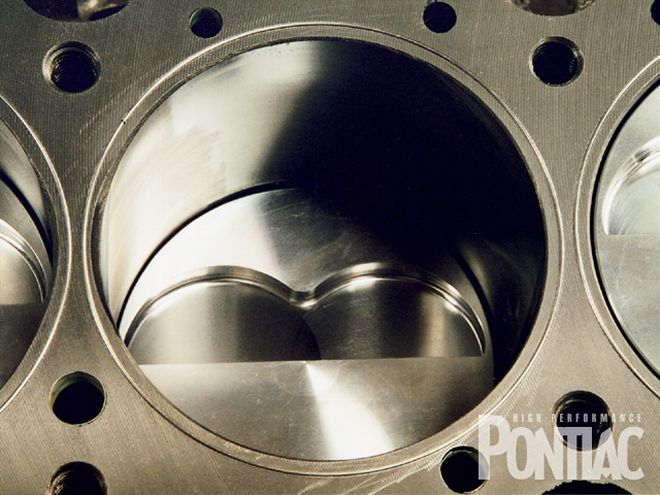
 Who would have ever believed that a ring of thin steel wire fitted into the block was the fix for keeping the combustion process contained in the cylinders of 650-plus hp Pontiac engines? In extreme cases with very high cylinder pressures, receiver grooves are cut into the block and heads to contain the pressure, but according to Jim Taylor, most Pontiacs will encounter main saddle failure running pressures high enough to require this set up, so O-ringing just the block or heads will be fine.
Who would have ever believed that a ring of thin steel wire fitted into the block was the fix for keeping the combustion process contained in the cylinders of 650-plus hp Pontiac engines? In extreme cases with very high cylinder pressures, receiver grooves are cut into the block and heads to contain the pressure, but according to Jim Taylor, most Pontiacs will encounter main saddle failure running pressures high enough to require this set up, so O-ringing just the block or heads will be fine.
If running faster each season in your Pontiac is the credo by which you live, then there will come a time when your engine combination reaches a power level that causes a set of head gaskets to fail after just a few runs. At this point, about 650 horsepower, according to engine builder and HPP contributor Jim Taylor, it's time to O-ring the engine to keep the water and combustion contained.
Jim explained that the Pontiac engine is at somewhat of a disadvantage with regard to cylinder to head sealing in race engines due to the fact that it only has 10 head bolts per side, whereas a big-block Chevy, for example, has 16. Also, Pontiacs are thin cast so things can move around under high cylinder pressures. When the head gaskets do give up in a Pontiac, they tend to leak water more than actual cylinder pressure but neither is a good thing at 135-plus mph through the traps. In Taylor's experience, many engines producing 650-plus hp get only 5-20 passes before the head gaskets fail, unless O-rings are employed.
If this scenario is all too familiar for you, then it's time to O-ring your race engine. Jim related that it's easier for the Ford and Chevy guys because gaskets are manufactured with the O-rings already in them. However, no company that we could find makes such gaskets for Pontiacs. So, how do you O-ring your Pontiac engine? Should you groove the block or heads to accept the O-rings? Is this a process that you can complete on your own when you assemble the engine? These questions and more will be addressed in the following captions.